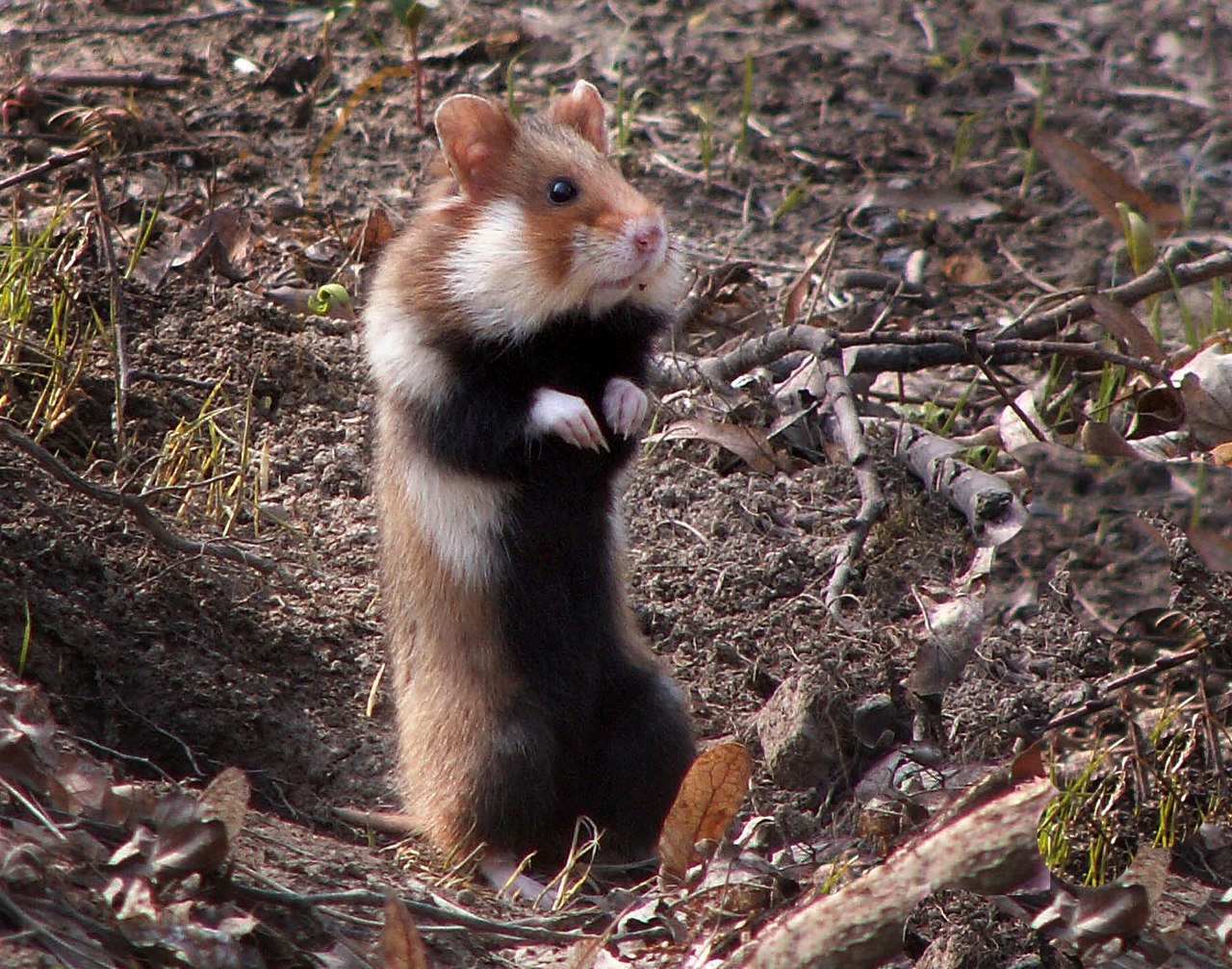 Image of common hamster by katanski - Own work, CC BY 3.0, https://commons.wikimedia.org/w/index.php?curid=10550799
Image of common hamster by katanski - Own work, CC BY 3.0, https://commons.wikimedia.org/w/index.php?curid=10550799
During hibernation common hamsters (Cricetus cricetus) alternate their time between bouts of torpor during which their metabolic rate drops and body temperature is low and arousal during which body temperature is normal. Hibernation allows animals to conserve energy although it is not without costs as it often results in memory deficits, cell damage and reduced immune function. Thus some studies have suggested that animals with sufficient food stores will not undergo hibernation or will undergo shorter periods of hibernation. Recent studies have shown that male and female hamsters prepare for hibernation differently. Whereas males eat the majority of food they find to increase body fat, females store the majority of food they find.
Researchers at the University of Vienna (Austria) wanted to know if there were other sex or age dependent variations in patterns of hibernation. Their results were recently published in the Journal of Comparative Physiology. What they found was that adult female hamsters spent more time foraging and thus entered hibernation later than males. Juveniles also entered the hibernacula later than males and, like females, relied on external food stores. Presumably this extra time allows females to wean offspring and juveniles to grow more before preparing for hibernation. Although they emerged from hibernation later than males, adult female hamsters spent less overall time hibernating with shorter and less frequent bouts of torpor than males.
Source:
Siutz C, Fransechnini C, Millesi E. Sex and age differences in hibernation patterns of common hamsters: adult females hibernate for shorter periods than males. Journal of Comparative Physiology B. 186(6): 801-811, 2016.

This is why I have always preferred female Hamsters.
What?
Let's hope that nobody else gets that joke.